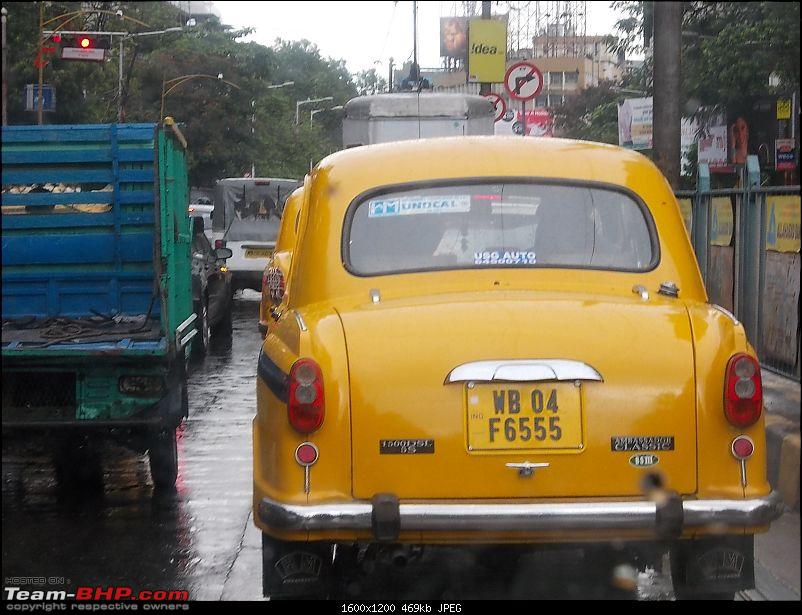I feel a strange disturbance in the force. It's as if million of taxi unions and their pet politicians cried out, and were suddenly silenced.
Uber's launch in major Indian cities is turning into a textbook model both for disruptive technology and in predicting conventional (and a few unconventional) responses to it. Uber (and a competitor, Lyft) took off in most US cities after I left to travel through India in 2011, so I've been watching from afar as that particular business model has evolved into one of the most controversial new technology buzzwords of the current tech startup ecosystem. With Uber's recent entrance in the Indian market and a very rapid growth model over the past year, there's a lot to learn.
Becoming Indian
Out of the gate, Uber had already adapted their model. Unlike the US Uber, where one of their main competitive (and most controversial) disruptions was the use of private, non-commercial vehicles, Indian Ubers are all commercially plated. This is because commercial vehicles in India are much easier to register and insure than their counterparts in the US, so there's not much to be gained from using private vehicles...other than a boatload of legal trouble, which Uber is already facing elsewhere. Not much point picking that fight in India.
In India, Uber's unique selling proposition is entirely different. The Indian taxi ecosystem is inherently, intrinsically corrupt, in a way that tarnishes your soul a little every time you interact with it. It is a given that half the taxis you approach in any major city will refuse trips (against the seldom-enforced law), that no two taxi meters will give you identical fares for identical distances (I've had 200% discrepancies in Calcutta!), that taxis will shamelessly insist on exorbitant overcharges for rides at night (or in the evening), or for rides to locations they don't like (including locations not in the general direction of the taxi driver's home, at night), and that in many cases, a driver will drive half-way to your destination before demanding an overcharge. In the four years I've traveled in India, I have known exactly two women in Calcutta who will take a taxi alone at night, and both aknowledge that this involves a not insignificant level of risk.
The Calcutta taxi itself is the venerable Ambassador, that cockroach of the motoring world. It has no interest in your air conditioning needs.

Wow. Now that I've written all of that out, that's a pretty long list of gripes.
Uber's USP in India is that it addressed every one of those issues as soon as they launched. Seriously. If you live in India and are used to taxis here, having a taxi platform where drivers never say no, never extort higher fares, and have names / licenses / license plate numbers on file for safety, with a GPS-based mapping system (Google maps!) in a brand-new, air-conditioned car and no way to tamper with the metered fare? This is revolutionary.
The Empire Strikes Back
Predictably, Uber's taking some heat on several fronts.
Other radio taxi services have always existed in India, but have never felt much of a need to do very much to set themselves apart. This changed as soon as Uber launched. In response, we quickly saw the existing market players (notably Meru Cabs and Ola) immediately add GPS tracking and map-based mobile apps. Feature for feature, they've copied pretty much everything Uber's done. In a country notorious for outsourcing programming work, Uber's tech wasn't much of a barrier to entry. Ola has also gone a step further in many markets and matched Uber's extremely aggressive pricing model. Both companies now come in cheaper than a regular AC taxi, slightly more expensive than a non-AC yellow taxi, and sometimes cheaper than yellow taxis with doctored meters.
We've also seen one rape case involving an Uber driver grabbing an inordinate amount of publicity, and several states are considering or passing legislation designed to force Uber's prices up under the guise of public safety (forcing the creation of call centers, cameras in cars, and similar features) based on lobbying by taxi unions. West Bengal is also rolling out a state-sponsored, home-grown app-driven taxi service to compete with Uber, though it's too soon to tell if they'll be able to pose a meaningful threat.
For now, I've got both the Uber and Ola apps on my phone, and there's not much to differentiate the two services. Uber's drivers seem slightly higher quality, and Ola's network has a tiny bit more reach into areas on the outskirts of Calcutta, but other than that, they're pretty competitive. It'll be interesting to see how this plays out in the coming years.

